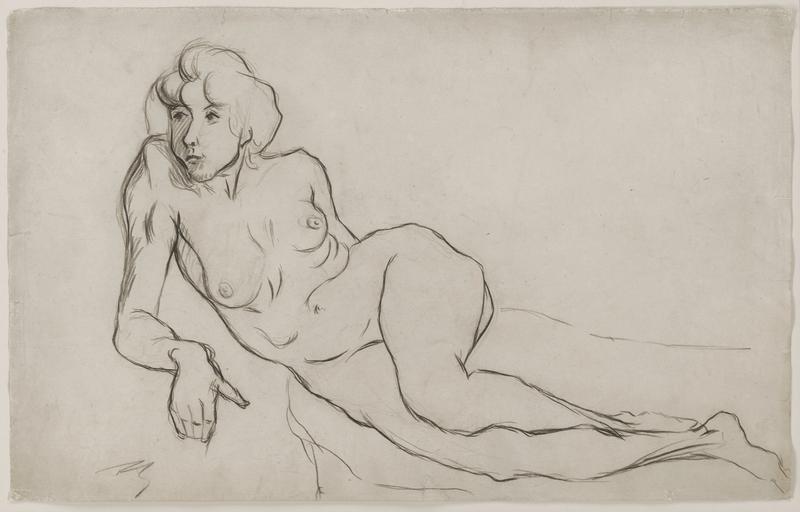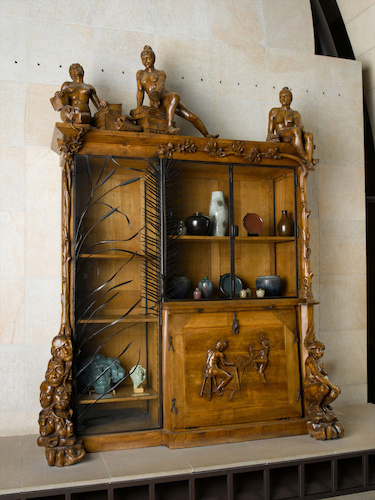
45. François Rupert Carabin, Recumbent Nude Woman
| Artist | François Rupert Carabin, French, Saverne, Bas-Rhin 1862–Strasbourg 1932 |
| Title, Date | Recumbent Nude Woman (Femme nue allongée), not dated |
| Medium | Charcoal |
| Dimensions | 8 7/8 × 14 1/4 in. (22.5 × 36.2 cm) (sheet) |
| Inscriptions + Marks | Lower left: RC |
| Provenance | [Mathieu Néouze, Paris, until 2013; to Weisberg]; Yvonne and Gabriel Weisberg, Minneapolis (2013–20; given to Mia) |
| References | "Tableaux, dessins & sculptures 1870–1920" (exh. cat.), Mathieu Néouze, Paris (April 2013), no. 14, ill. |
| Credit Line | Gift of Dr. Gabriel P. and Yvonne M.L. Weisberg 2020.92.1 |

François Rupert Carabin’s position in the visual arts of France was that of a revolutionary. Trained in all the arts, Carabin dedicated himself early on to abolishing the boundaries between sculpture and the decorative arts, and between “acceptable” subjects and those that were sexually challenging.
In 1889 he received a commission to create a bibliothèque, a large display case for housing books and ceramics. His response was a sculptural ensemble ornamented with wood carvings of naked, provocatively posed women (fig. 1). The present sheet, while not connected to this piece of furniture, is typical of his preparatory drawings in its spare lines and lack of embellishment or shading. Carabin tried to exhibit his bibliothèque at the Salon des Indépendants, but the jury rejected it. He had more luck at the Salon of the Société Nationale des Beaux-Arts, where the decorative arts were welcomed.
Women occupy a central position in Carabin’s oeuvre. Before carving figures for his highly sculptural furniture, Carabin studied the female form by posing models and taking photographs of women in seductive poses. These photographs served as a vital repository of ideas. From them Carabin executed the innumerable drawings he used to create his functional sculpture. Numbering more than 700, the photographs are now housed at the Musée d’Orsay in Paris.
GPW